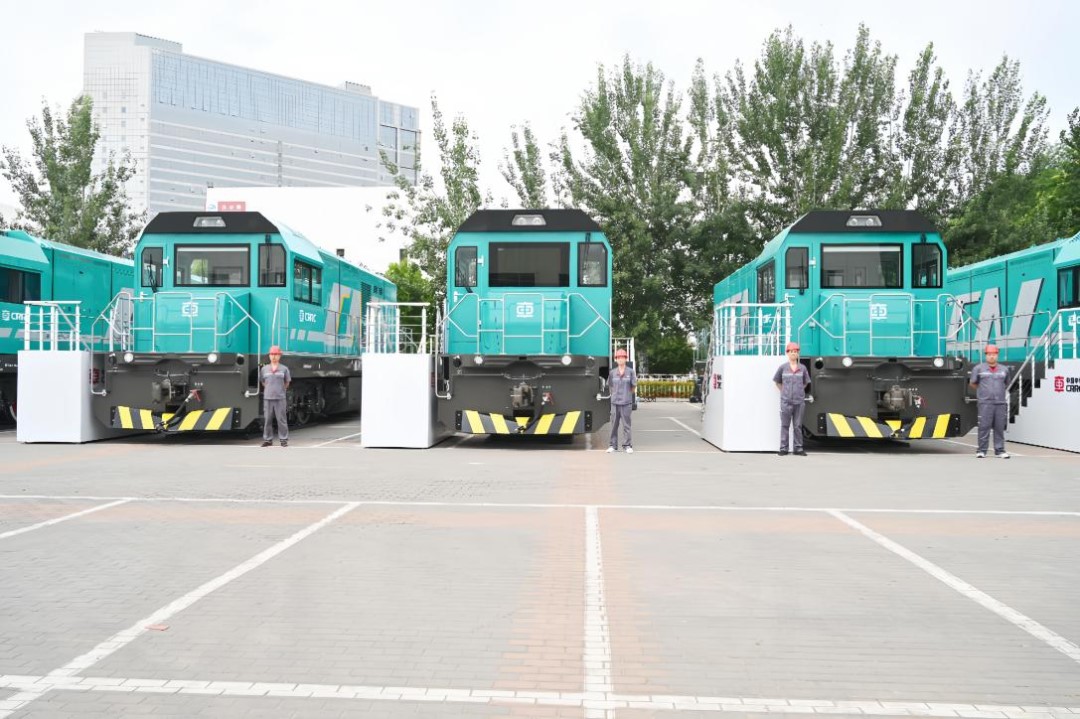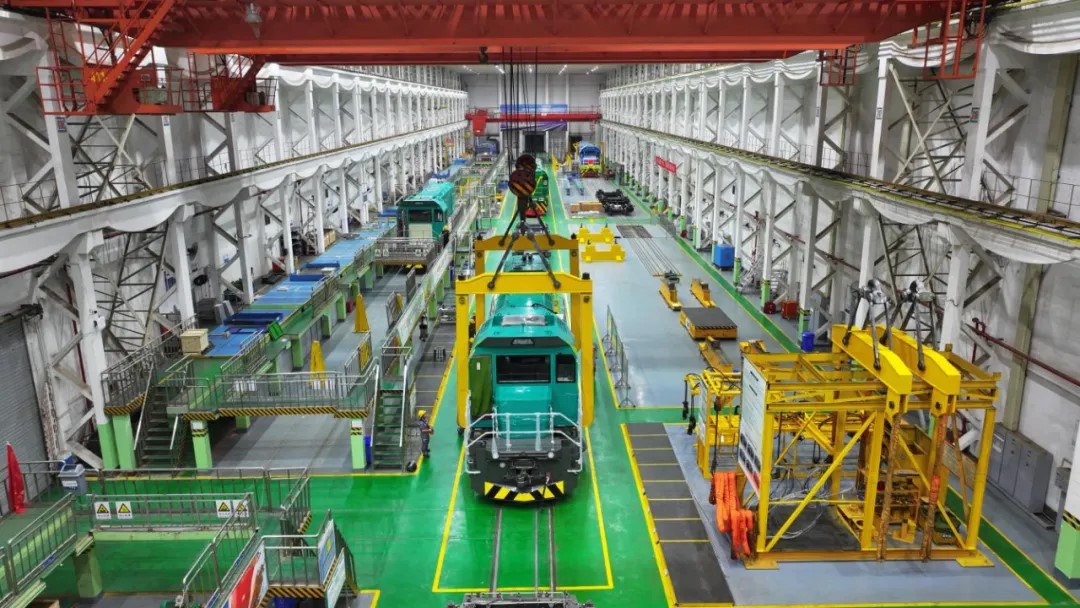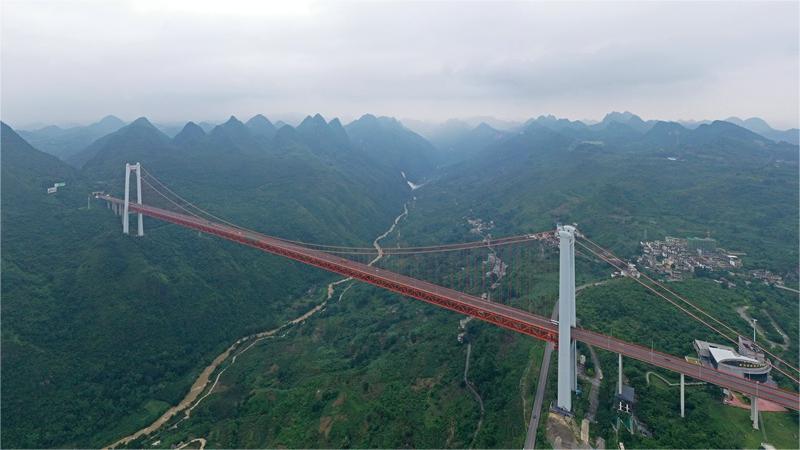CRRC releases world's first report on carbon footprint of pure electric locomotives
Chinese state-owned and publicly traded rolling stock manufacturer China Railway Rolling Stock Corporation (CRRC) on June 28 launched seven new energy locomotives, which come in three power configurations - hybrid powered by both diesel and electricity, power battery only and hydrogen fuel cell.
The series of locomotives feature low emission, low noise and high efficiency. They offer an effective solution to the high fuel consumption, high emission and high noise issues faced by old-fashioned diesel-powered locomotives.

New energy locomotives launched by China Railway Rolling Stock Corporation (CRRC). (Photo from the public account of CRRC on WeChat)
Besides, CRRC released the world's first report on the carbon footprint of pure electric locomotives, which was reviewed by authoritative international organizations and awarded the ISO 14067 carbon footprint verification.
The report accurately calculates the trajectories of carbon dioxide emissions of new energy locomotives throughout their entire lifecycle - from raw iron ore to being recycled after 30 years of service, using a combination of real-world scenarios and modeling techniques, said Wang Feifei, deputy head of the green and low-carbon development group of the CRRC development transformation office.
The report measures carbon emissions in the manufacturing of every screw, nut, as well as major components such as the bodies, wheelsets, and bogies, the acquisition of raw materials, and general assembly.
According to the information obtained, the calculation involved over 97,000 data points, all derived from real-world scenarios, providing an accurate reflection of the products' manufacturing process. For emission factors that were difficult to directly obtain, background data from internationally authoritative databases were used.
The final verification showed that the carbon footprint of a 1,000 kW hybrid locomotive powered by both diesel and electricity is 7.4 kilograms of carbon dioxide equivalent per kilometer, and that of a 1,000 kW pure electric locomotive is 7.92 kilograms of carbon dioxide equivalent per kilometer.
An analysis of carbon emissions at various stages of locomotive production reveals that the operational phase has the most significant impact on a product's carbon footprint during the entire lifecycle.
Over a 30-year operational period, a pure electric locomotive with a 1,000-ton capacity, running on green electricity at 40 percent of standard operational speed, can reduce its carbon footprint by 94.2 percent compared to traditional locomotives, cutting carbon emissions by 4,076 tons. For a hybrid locomotive using both diesel and electricity under the same conditions, the reductions would be 61.7 percent and 2,735 tons, respectively.
It is learned that key components of the new energy locomotive series adopt lightweight designs. The traction motor's weight has been reduced by 22.5 percent, and that of the bogie by 6.7 percent. Steel structures in the driver's cab have been reduced by 40 percent, and those of the underframe by 70 percent. This has effectively lowered carbon emissions in raw material acquisition, as well as component production and transportation.

A 1,000 kW new energy locomotive is assembled in a workshop of CRRC Ziyang Co., Ltd. in southwest China's Sichuan province. (Photo from the public account of CRRC on WeChat)
"Moreover, we maximized the use of green electricity in the manufacturing process, with green power accounting for over 20 percent of our electricity consumption. This enabled us to achieve about a 52 percent reduction in carbon footprint during manufacturing and maintenance phases compared to the models being replaced," Wang said.
"In the future, as manufacturing companies further expand their photovoltaic power generation, this percentage will continue to increase," Wang added.
In addition to reducing carbon dioxide emissions, the new energy locomotive series also excel in reducing pollutant emissions.
According to statistics, the diesel-power battery hybrid locomotive can achieve a 45 percent reduction in nitrogen oxides, a 73 percent reduction in hydrocarbons, and an 83 percent reduction in carbon monoxide emissions.
With a 45 percent reduction in pollutants, each locomotive can reduce harmful substance emissions by 4 tons and carbon emissions by 374 tons annually.
Adopting an optimal hybrid power control technology, the hybrid locomotive can ensure that the diesel engine always operates at its most economical speed. When pulling a 3,000-ton load on a straight track with a full tank of fuel, this locomotive can travel over 1,100 kilometers - 1.7 times the range of traditional diesel-powered locomotives - with a fuel efficiency improvement of over 45 percent.
The pure electric locomotive launched this time is compatible with various types of charging piles, with charging power exceeding 870 kW. The shortest charging time is less than 40 minutes, and the locomotive can operate in a wide temperature range from minus 40 degrees Celsius to 40 degrees Celsius.
For the hydrogen fuel cell locomotive, refueling takes only 10 to 15 minutes, which effectively ensures operational capability and range. Its energy utilization efficiency is over 80 percent higher compared to traditional diesel-powered locomotives.
"This series of new energy locomotives will generate huge and diverse demands for new energy products, and drive the development of upstream industries such as basic materials and key components," said Tian Jun, chief engineer of the National Railway Administration and director of the administration's equipment supervision and management department.
Photos
Related Stories
- Bank of Communications ups loan support for green transformation
- World Environment Day: Turning China green
- Academy report urges more focus on consumption side of carbon emissions
- China issues action plan for decarbonization, aiming to cut fossil fuel use, increase clean energy
- China set to publish carbon footprint management plan
Copyright © 2024 People's Daily Online. All Rights Reserved.









